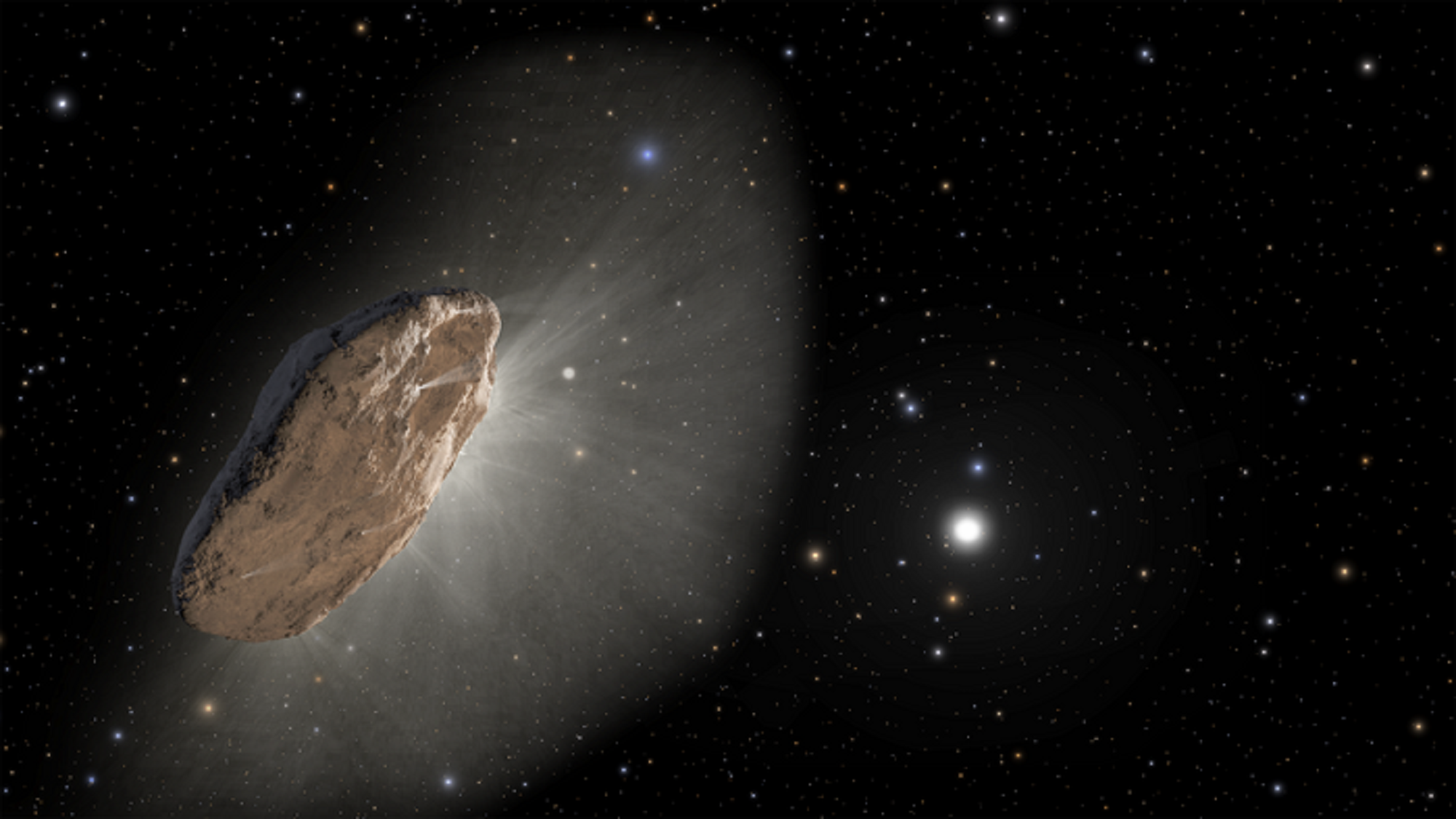

Since its discovery in 2017, the interstellar object ‘Oumuamua has been a point of fascination—and sometimes obsession—for astronomy fans. As the first object we’ve seen from another solar system, it’s naturally drawn a lot of interest, with its strange tube-like shape and surprisingly small size. It even accelerated at one point in its orbit, which happens regularly with comets—but ‘Oumuamua didn’t have the usual gassy tail, leading some to even propose it may be an alien ship.
A new hypothesis, published on March 22 in the journal Nature, proposes a different explanation for ‘Oumuamua’s anomalous orbit. Astronomers Jennifer Bergner and Darryl Seligman say the half-mile-long object is just a comet after all, but that its time in interstellar space changed its chemistry. Instead of water causing the extra propulsion, ‘Oumuamua released nearly invisible hydrogen.
“It’s exciting that we can explain the strange behavior of ‘Oumuamua without needing to resort to any exotic physics,” says Bergner, an astrochemist at the University of California, Berkeley and lead author on the new paper.
“Hopefully this discovery will put to rest any outlandish ideas about ‘Oumuamua being an alien probe,” adds University of Washington astrobiologist Kaitlin Rasmussen, author of the upcoming book Life in Seven Numbers: The Drake Equation Revealed.
Comets are chunks of ice and debris left over from the process of planet formation, lurking at the edge of our solar system. On their extremely long and stretched out orbits, they occasionally dive in towards the sun. There, the sun’s bright rays vaporize some of the comet’s ice and dust to make the fuzzy coma and the sweeping tails we see.
[Related: Scientists finally solve the mystery of why comets glow green]
‘Oumuamua may have begun its life as a typical comet around another star—rich with water ice—before being thrust out into open space by the chaos of a young solar system. (Our solar system likely spewed out similar chunks of detritus in its early days.) On its voyage between the stars, Bergner and Seligman propose that ‘Oumuamua was bombarded with energetic particles known as cosmic rays. These high-energy particles broke the bonds between hydrogen and oxygen in water molecules, creating molecular hydrogen (H2) trapped in the crystalline structure of the ice.
Once ‘Oumuamua swung by the sun, the heat rearranged the crystals of its ice, releasing the molecular hydrogen to propel the interstellar interloper and cause its observed acceleration, almost like a rocket booster. “It’s more plausible than the other ideas,” says UCLA astronomer David Jewitt, “including those relying on carbon monoxide (which was not detected), nitrogen ice (which is relatively hard to find), and, of course, the spaceship idea.”
“I think the authors have a very interesting hypothesis,” agrees Caltech planetary scientist Qicheng Zhang, who is not affiliated with the research team. The real significance of this result, though, will come with further observations, he adds.
‘Oumuamua was only invisible for a short time when it passed within 15 million miles of Earth in 2017; now on Pluto’s fringes, it’s far beyond the reach of even our largest telescopes. As an alternative to direct data, Bergner and Seligman suggest studying a similar effect on ‘Oumuamua-sized comets from our own solar system. But there’s one catch—we haven’t spotted any solar system comets that small yet. Astronomers hope the next generation of telescopes, including NASA’s recently launched James Webb Space Telescope, will spot the first of those objects.
[Related: The Milky Way could have dozens of alien civilizations capable of contacting us]
Casey Lisse, an astronomer at Johns Hopkins Applied Physics Lab, also suggests that a comet’s H2 may be observable if it splits apart into two hydrogen atoms under the influence of the sun’s ultraviolet rays. The signal on a ‘Oumuamua look-alike could be picked up by certain satellites like SOHO, NASA’s long-running solar space telescope, “which are known to measure bright comets,” he says.
Astronomers also expect to root out many more interstellar objects in the coming years; they recorded the second one, known as comet 2I/Borisov, in 2019. “There’s approximately one similar object in the inner solar system at any given time,” says Seligman, Cornell astronomer and co-author on the Nature study. “When we get the Rubin Observatory and the NEO [Near-Earth Object] Surveyor going, we’ll be discovering way more.”
Astronomers think of these interstellar objects as a window into other solar systems: the closest peek we’ll get at the building blocks of other planets. “Any object of interstellar origin is incredibly valuable to us because it’s bringing clues about the processes going on beyond our solar system,” says Bergner.
